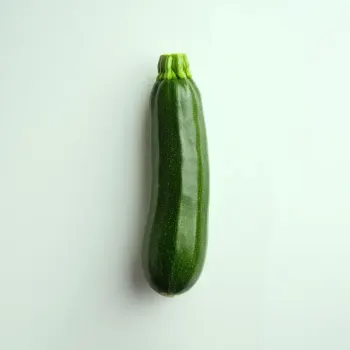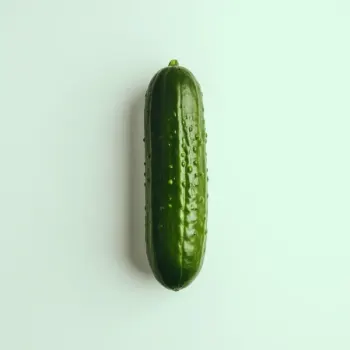Cucumbers and zucchinis are distinct vegetables often used in cooking for their unique flavors and textures—cucumbers being crisp and cool, ideal for raw dishes, and zucchinis tender and slightly sweet, suitable for cooking. They're not interchangeable in recipes that rely on their specific characteristics.

Cucumbers are a popular, refreshing vegetable commonly used in salads, pickling, and as garnishes. They belong to the Cucurbitaceae family and are known for their crisp texture and mild, somewhat watery flavor.

Zucchini, also known as courgette, is a summer squash that can be eaten raw or cooked. It has a delicate flavor and a slightly more tender texture compared to cucumber. It's versatile in the kitchen, often used in stir-fries, baking, and grilling.
Cucumbers and zucchinis differ in taste, texture, and culinary uses. Cucumbers have a crisp, cool taste and are often eaten raw, whereas zucchinis have a mild, slightly sweet flavor and are more commonly cooked. Cucumbers have a higher water content, which contributes to their signature crunch, while zucchinis have a firmer texture. They also differ in shape and color, with cucumbers typically being longer and greener.

Your ultimate Recipe Box, Meal Planner, and Cooking Class all in one
Best used in fresh, raw salads like Greek salad or cucumber ribbon salad. Its refreshing taste and crunch provide a delightful contrast to other ingredients. Slice thinly for a delicate texture or chunky for a more substantial bite. Ideal for adding a tender bite to cooked or grilled salads. Try it in a warm zucchini and quinoa salad. Grate it for a softer texture or slice into half-moons to maintain some bite.
The classic choice for pickling, cucumbers transform into crunchy dill pickles or sweet bread-and-butter pickles. The key is to use small, firm cucumbers for the best texture. While less traditional, zucchini can also be pickled for a softer, more succulent result. Slice them thinly and mix with onions and peppers for a summer squash relish.
Less common in baking, cucumbers can still be used in cakes and bread for added moisture. Remove the seeds and grate the flesh finely before incorporating into the batter. A popular ingredient in baking, zucchini adds moisture and subtle flavor to bread, muffins, and cakes. Grate and squeeze out excess water before adding to the mix for best results.
Both cucumbers and zucchinis are low in calories and contain valuable nutrients.
| Nutrient | Cucumber ( per 100 grams ) | Zucchini ( per 100 grams ) |
|---|---|---|
| Fat | 0.1g | 0.3g |
| Fiber | 0.5g | 1g |
| Protein | 0.7g | 1.2g |
| Calories | 15 | 17 |
| Vitamin C | 2.8mg | 17.9mg |
| Carbohydrates | 3.6g | 3.1g |
While you can technically substitute zucchini for cucumber in tzatziki, the sauce will have a softer texture and a different flavor profile. It's best to stick with cucumber for the traditional crisp and refreshing taste.
Both vegetables are low in calories and can be part of a weight-loss diet. However, cucumbers have a lower calorie count per serving, making them slightly more favorable for calorie-conscious diets.
Grilling cucumbers is not recommended as they contain a lot of water and will turn mushy. Zucchinis, on the other hand, are great for grilling due to their firmer texture.
Look for cucumbers that are firm with bright green skin. For zucchinis, select ones that are small to medium in size with a vibrant color and firm texture.
Yes, both can be used in smoothies. Cucumbers will add a refreshing taste, while zucchinis will give a creamier texture and boost of nutrients.